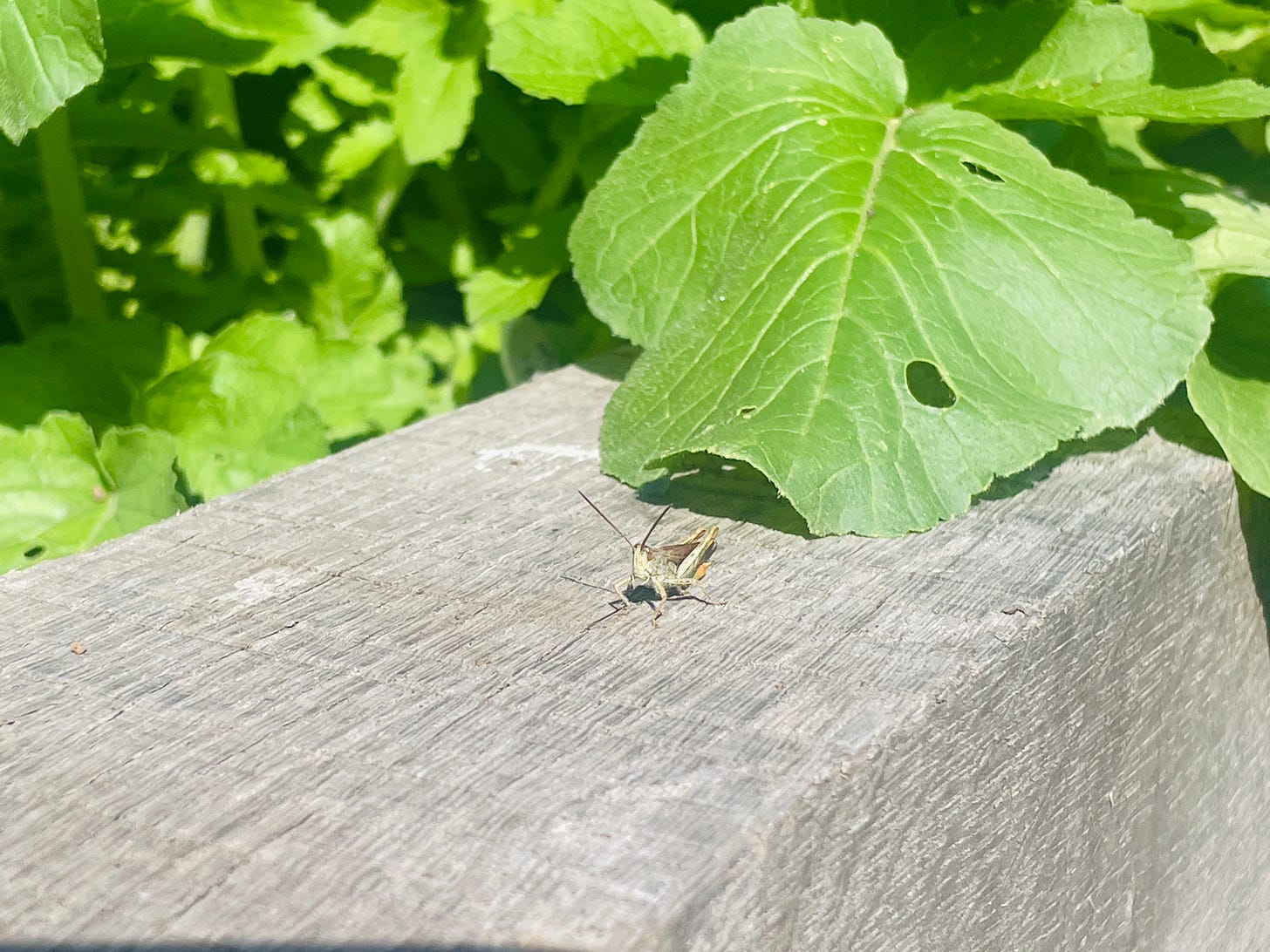August felt like a good time not to send newsletters to pile up like issues of the local free newspaper on the doormat for when you get back from holiday; that, and I need to get through a few weeks of intense writing for the next book.
It’s very nice to be back. I hope the summer was good for you.
I wanted to show you a little window into part of the garden. One of the things I love about the idea of sharing it is that it isn’t yet beautiful - I mean, it is to me, but perhaps not more widely. For now at least, it is all about the process, the trajectory it’s on.
At the end of last winter, I took a very high stack of thick card - everything from washing machine packaging to ageing removal boxes - from the garage to the back garden, in the first step of turning it into a forest garden.
If you are familiar with the 17 acres smallholding Otter Farm my wife and I created out of two empty fields in East Devon, you may know about the thinking. Otter Farm was - with the possible exception of Martin Crawford’s forest garden in Dartington - perhaps the most diverse collection of edible plants in the country. There was everything from pecan orchards to perry pears, almonds to American persimmons, bladdernuts to Chilean guava, asparagus to blue honeysuckle, yacon to Sauvignon blanc vines, kiwis to cardoons, 30+ varieties of mint to apios americana. I say ‘was’, I mean ‘is’: while we are no longer at the farm, others are doing their own thing very successfully there.
The great majority of those 17 acres was made up of perennial plants - those that you plant, grow and can be harvested over numerous years. Some of it was planted as a forest garden - a multilayered system, from canopy trees through shrubs, herbaceous plants, ground cover, subterranean harvests and climbers linking them all - all interplanted with species that provide nutrients and other benefits to the main crops. It’s an inherently low energy system: you get out much compared to what you put it. Here’s a short window into Martin Crawford’s forest garden: when I first visited in 2001, my life changed.
And so, I wanted to see how well I could take the principles of a forest garden and apply them to a regular sized garden, and in particular one on a fairly interesting slope.
Most of the work with a forest garden is establishment. Clearing the ground, minimising weed encroachment, planting and so on. You have to plant as if the plants are fully grown, leaving space for natural expansion, for affinities and partnerships to form, to incorporate new ideas you have and to rectify mistakes you realise you’ve made.
It doesn’t look so special for a little while - not if you are looking at it with aesthetics foremost - but when I’m sat by the ginger rosemary drinking coffee, noticing particular bees taking to the anise hyssop while other species favour the aralia, hearing the crowds of grasshoppers chirping in the uncut grass, when I’m wondering from where these self-sown chamomile originate, seeing the squash my wife planted into the blank spots thriving, or when I’m looking down on it from the top of the house and imagining how it might develop, it looks pretty special to me.
It’s early days - the garden is mostly bones, with many gaps to fill - but already it has a personality. The main part of the film was shot 7-8 weeks or so ago, after two months of dry sun; it looks more lush now that rain has fallen steadily over much of that time.
So, for those interested in how to colonise lawn, or want some ideas for plants with flavours beyond the range in the shops, I hope you enjoy the film too. There will be more windows in as I plant more, as those in the ground develop and as I get more ideas.
Happy end of summer to you.







Share this post